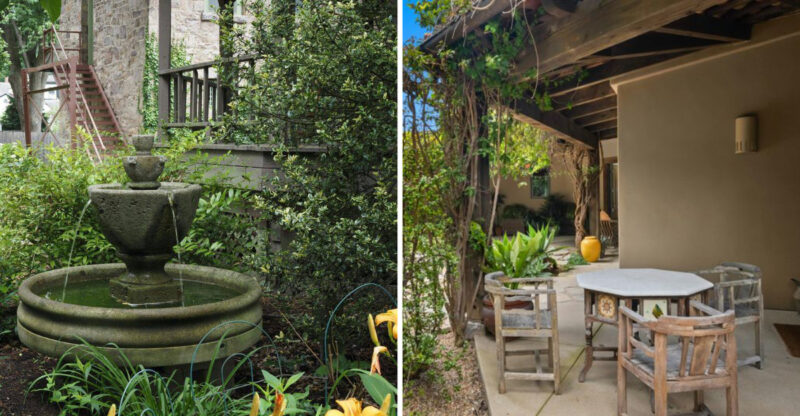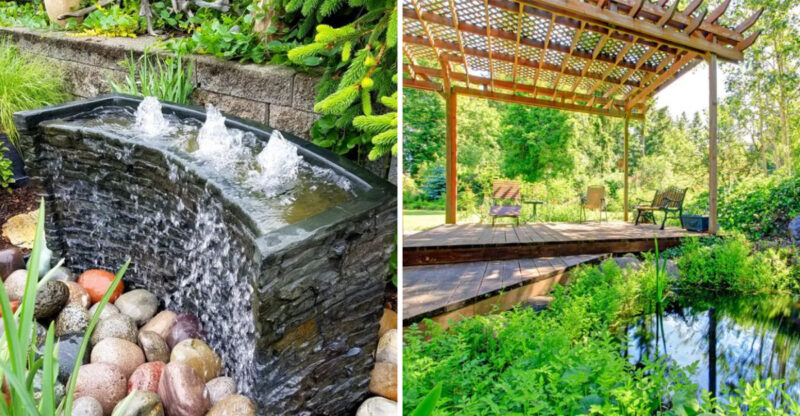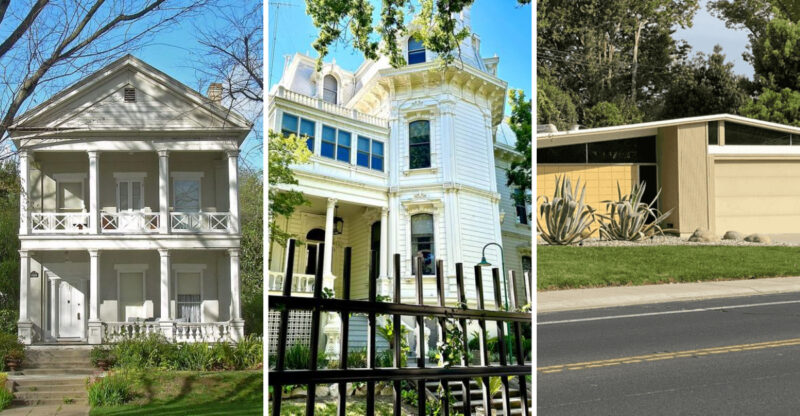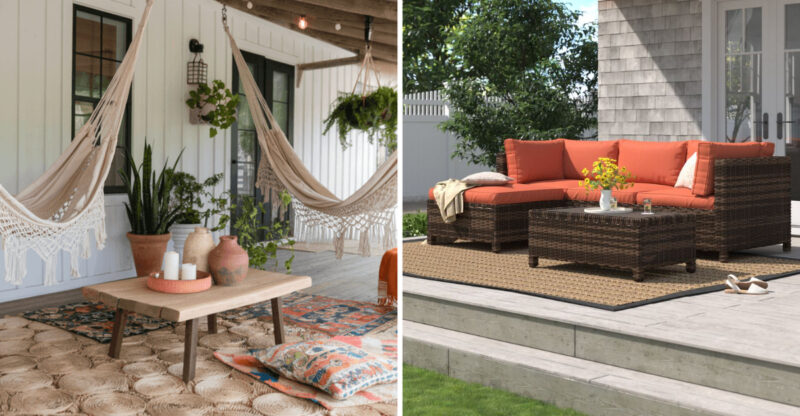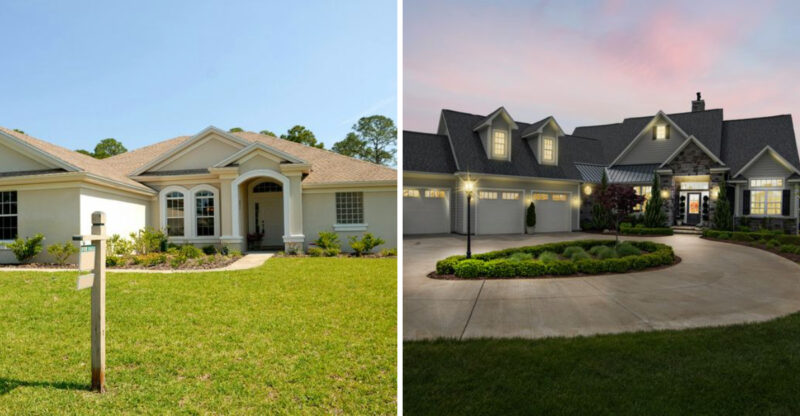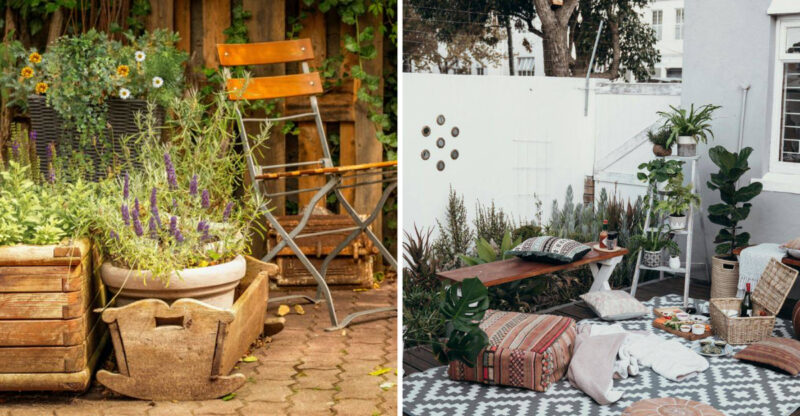8 Ways To Make A Small Garden Feel Like A Hidden Oasis
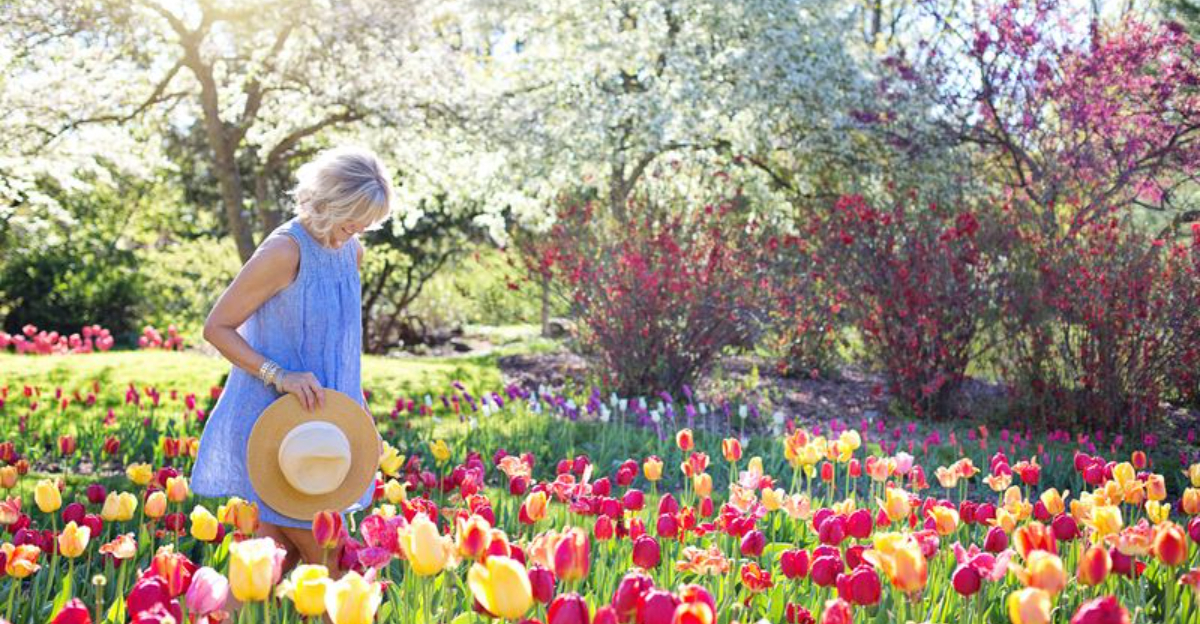
Small gardens can feel cramped and uninspired, but a few smart design tricks can turn even the tiniest outdoor space into a charming retreat.
You don’t need acres of land or a large budget to create a secret oasis. With thoughtful planning and strategic touches, your compact garden can feel like a private paradise where you can relax and escape from the everyday.
Keep in mind that results may vary depending on your garden’s size, layout, and climate.
1. Vertical Planting: Use walls or trellises for greenery
Growing upward is a game-changer when floor space is limited. I’ve found that attaching trellises to walls or fences creates instant green walls with climbing plants like jasmine, clematis, or ivy.
Pocket planters and hanging baskets add another dimension, bringing greenery to eye level and above. The vertical approach frees up precious ground space while surrounding you with lush foliage.
For an easy DIY project, try repurposing a wooden pallet into a vertical herb garden. The cascading effect of plants growing at different heights creates a jungle-like atmosphere that makes your small space feel wonderfully enveloped in nature.
2. Raised Beds: Create depth and structure
Building raised beds instantly adds architectural interest to flat spaces. I love how they create different levels, making even the smallest garden feel more dynamic and thoughtfully designed.
Raised planters bring your favorite flowers and vegetables closer for easier maintenance, eliminating the need for constant bending. The defined edges also create a sense of organization that makes small spaces feel intentional rather than cramped.
If you’re working with limited room, consider building beds of varying heights around the perimeter. This layering technique draws the eye upward and inward, creating depth while maximizing your planting area in a way that transforms a tiny plot into a lush growing space.
3. Pathways: Narrow winding paths for charm
Winding paths work magic in compact gardens by creating the illusion of a journey through a larger space. I’ve seen how a simple curved pathway made from stepping stones, gravel, or brick can transform a straightforward rectangle into an intriguing exploration.
The secret is making the path narrow and ensuring it isn’t visible all at once. This encourages slower movement and discovery, making your garden experience feel more expansive than its actual dimensions.
Adding low plants that slightly spill over edges softens the look while creating mystery about what lies around the bend. Even in a garden just a few feet across, a thoughtfully designed path can create the sense of wandering through your own secret garden.
4. Water Features: Small fountains or birdbaths
Water brings multisensory magic to compact gardens through sound, movement, and reflection. I’ve found that even a tiny tabletop fountain creates a focal point while masking neighborhood noise with gentle splashing sounds.
Solar-powered options eliminate the need for electrical outlets, making installation simple anywhere sunshine reaches. The sound of moving water instantly creates a relaxing atmosphere that transforms an ordinary space into a meditative retreat.
Birdbaths serve double duty by attracting winged visitors while adding water elements without pumps or electricity. The rippling reflections created by even the smallest water feature catch light in mesmerizing ways, adding a dynamic element that makes your garden feel alive and connected to nature’s rhythms.
5. Container Gardens: Flexible plant placement
Pots and planters offer unmatched versatility for small-space gardening. I can rearrange my container garden seasonally, bringing flowering plants forward when blooming and moving less showy specimens to background positions.
Mixing container sizes creates visual interest while accommodating plants with different root needs. Large pots make dramatic statements with architectural plants like ornamental grasses or small trees, while clusters of smaller containers create abundant plant groupings without permanent commitment.
Wheeled platforms under heavier containers allow easy movement for cleaning or entertaining. This mobility transforms container gardening from merely practical to truly adaptable, letting you redesign your space for different occasions or simply refresh the look when inspiration strikes perfect for rental properties or changing seasonal needs.
6. Seating Nooks: Cozy benches or chairs
Carving out a dedicated sitting area transforms a garden from something you look at to somewhere you live in. I’ve found that tucking a bench or chair against a wall or fence maximizes space while creating a sense of security and embrace.
Weather-resistant cushions and throws instantly upgrade basic seating into an outdoor living room. The key is positioning seats to offer the best view of your garden’s prettiest features, turning even maintenance-heavy plants into visual treats rather than chores.
For ultra-small spaces, folding chairs or wall-mounted flip-down seats provide flexibility. Having somewhere comfortable to sit encourages you to actually use your garden regularly, transforming it from a pretty but distant space into your personal sanctuary where morning coffee or evening unwinding becomes a cherished ritual.
7. Pergolas & Arbors: Define areas and add shade
Adding overhead structures instantly creates a room-like feeling in the open air. I’ve seen tiny gardens completely transformed with simple wooden pergolas that establish a sense of enclosure without actual walls.
Training climbing plants like wisteria or grapevines across the top provides dappled shade in summer while allowing warming sunlight through in winter. The vertical supports double as growing space for clematis or jasmine, maximizing planting opportunities in tight quarters.
Even a small arbor over a garden entrance creates a magical threshold experience, signaling the transition from everyday space to your special retreat. These structures add height without taking up much ground space, drawing the eye upward and creating the perception of a larger, more defined garden room where you feel pleasantly sheltered.
8. Miniature Statues: Add personality and focus
Small decorative elements create focal points that express your personality while breaking up plant masses. I’ve found that strategically placed items like a tiny Buddha statue, ceramic mushrooms, or a small stone animal create discovery moments that make gardens feel magical.
Positioning these elements partially hidden among plants encourages exploration and creates delightful surprises as visitors move through the space. The human-made forms provide contrast against organic plant shapes, creating visual tension that makes both elements more interesting.
Weathered or moss-covered pieces look as though they’ve always belonged, adding a sense of history and permanence. These thoughtful touches transform ordinary plantings into personalized spaces with stories to tell, creating conversation starters and memory markers that make even the newest garden feel established and meaningful.

